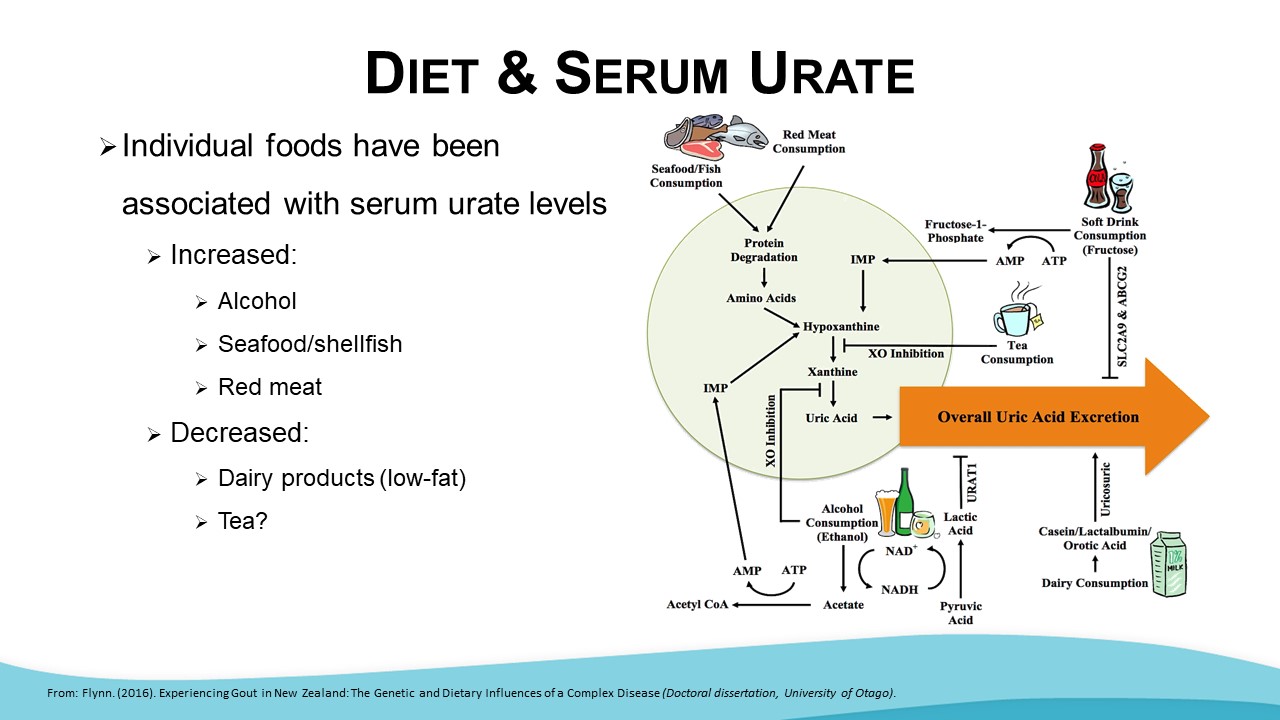Gout. Presented by Dr Tanya Major, PhD, Department of Biochemistry, University of Otago, NZ
Gout is the second most common form of arthritis (after osteoarthritis) in Australia and New Zealand. It affects approximately 185,000 people in New Zealand, and 1.1 million in Australia. It is extremely painful and debilitating and we often have clients asking for dietary advice to prevent flares.
Gout is caused by an inflammatory response to urate crystals, which can form when serum urate is ≥ 0.42 mmol/L (hyperuricaemia). Only 13 to 30% of people with hyperuricaemia will actually experience a gout flare. What is not understood is what triggers a gout flare in these 13 to 30% of people, while 70 to 87% of people with hyperuricaemia remain asymptomatic.
In people experiencing gout the biggest contributors to urate levels are:
- Being male (~30%)
- BMI or genetics (~14%)
- Diet (~3%)
- Alcohol (~2%)
Urate-lowering medication eg. Allopurinol is the most powerful method to reduce serum urate, this lowers hyperuricaemia by 33%.
As well as explaining the pathogenesis of gout, Tanya gives us the evidence for the use of diet in reducing serum urate. Disappointingly, dietary modification has been shown to be only minimally useful. Some people may be able to identify specific foods which trigger a gout flare. However, diet should not be overlooked in the management of these clients; diet is extremely useful in helping to manage the co-morbidities and general health of someone with gout. People with gout are more likely to have diabetes and cardiovascular disease compared to the general population.
Dr Tanya Major is a researcher at the University of Otago, Dunedin, NZ. She has a PhD in genetics, and for the past 10 years has been involved in research on the dietary, environmental and genetic influences of gout.
To access this presentation and the associated materials including the assessment quiz, click here

